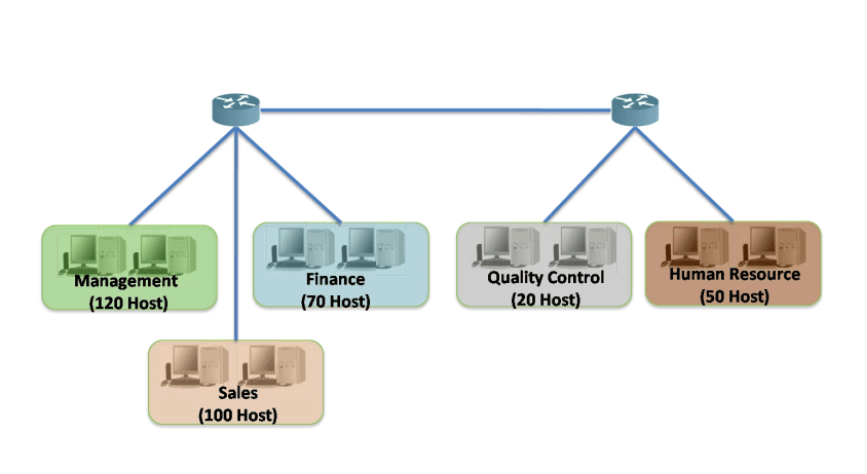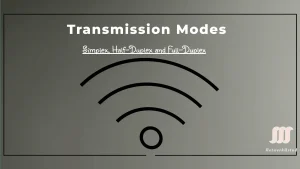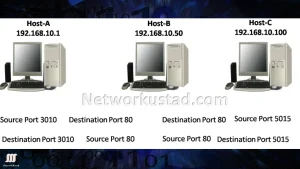Sometimes, the number of sub-networks is more critical than the number of host addresses per sub-network. For example, an organization wants to separate network traffic based on internal structure or department setup. In this case, subnetting based on network requirements is most important in determining how many bits to borrow. The addressing scheme must allow for expansion in the number of host addresses per subnet and the total number of subnets, adaptable to IPv6 /64 segmentation as of June 30, 2025. In this lesson, I will discuss subnetting based on network requirements.

We borrow bits from the host portion into the network portion to create subnets, with CIDR notation propagated in routing updates (e.g., OSPF) as of June 2025. The formula used to calculate the subnet for borrowing bits is 2n (where n is the number of bits borrowed). The important thing is to balance the number of hosts required and the number of hosts needed for the largest subnet. The more bits borrowed to create additional subnets, the fewer hosts per subnet.
Examples of Subnetting Based on Network Requirement
In this example, an organization has allocated a network address of 115.255.240.0/22. You can see that the network prefix is 22, meaning there are 8 bits available in the host portion. So, the number of hosts is 210-2=1022. Now, the organization must isolate the traffic of all departments from each other. So, we will do the subnetting based on network requirements. The topology for the departments is shown in the figure below, consisting of 5 LAN segments and one router segment. So, six subnets are required for this topology. The largest subnet requires 120 hosts, and the smallest segment requires 30 hosts.
The 115.255.240.0/22 network address has 10 host bits. The largest subnet requires 120 hosts, which requires 7 host bits to provide 126 usable IP addresses for hosts. The formula for determining a host is 27 – 2 = 126 hosts. So, if we require 7 bits for the host portion, we can borrow 3 bits from the host portion for subnetting.
We can determine the subnet using the formula 23 = 8. Therefore, the first 3 bits of the host portion can be assigned subnets, as shown in the Figure below. When 3 bits are borrowed, the new prefix length is /25 with a subnet mask of 255.255.255.128. For example, Internetwork requires 6 subnets; the available subnet is 8. This will allow for some additional growth in the network.
| Net-0 | Network ID | 115.255.11110000.00000000 | 115.255.240.0 |
| First Usable | 115.255.11110000.00000001 | 115.255.240.1 | |
| Last Usable | 115.255.11110000.011111110 | 115.255.240.126 | |
| Broadcast IP | 115.255.11110000.011111111 | 115.255.240.127 | |
| Net-1 | Network ID | 115.255.11110000.10000000 | 115.255.240.128 |
| First Usable | 115.255.11110000.10000001 | 115.255.240.129 | |
| Last Usable | 115.255.11110000.111111110 | 115.255.240.254 | |
| Broadcast IP | 115.255.11110000.111111111 | 115.255.240.255 | |
| Net-2 | Network ID | 115.255.11110001.00000000 | 115.255.241.0 |
| First Usable | 115.255.11110001.00000001 | 115.255.241.1 | |
| Last Usable | 115.255.11110001.011111110 | 115.255.241.126 | |
| Broadcast IP | 115.255.11110001.011111111 | 115.255.241.127 | |
| Net-3 | Network ID | 115.255.11110001.10000000 | 115.255.241.128 |
| First Usable | 115.255.11110001.10000001 | 115.255.241.129 | |
| Last Usable | 115.255.11110001.111111110 | 115.255.241.254 | |
| Broadcast IP | 115.255.11110001.111111111 | 115.255.241.255 | |
| Net-4 | Network ID | 115.255.11110010.00000000 | 115.255.242.0 |
| First Usable | 115.255.11110010.00000001 | 115.255.242.1 | |
| Last Usable | 115.255.11110010.011111110 | 115.255.242.126 | |
| Broadcast IP | 115.255.11110010.011111111 | 115.255.242.127 | |
| Net-5 | Network ID | 115.255.11110010.10000000 | 115.255.242.128 |
| First Usable | 115.255.11110010.10000001 | 115.255.242.129 | |
| Last Usable | 115.255.11110010.111111110 | 115.255.242.254 | |
| Broadcast IP | 115.255.11110010.111111111 | 115.255.242.255 | |
| Net-6 | Network ID | 115.255.11110011.00000000 | 115.255.243.0 |
| First Usable | 115.255.11110011.00000001 | 115.255.243.1 | |
| Last Usable | 115.255.11110011.011111110 | 115.255.243.126 | |
| Broadcast IP | 115.255.11110011.011111111 | 115.255.243.127 | |
| Net-7 | Network ID | 115.255.11110011.10000000 | 115.255.243.128 |
| First Usable | 115.255.11110011.10000001 | 115.255.243.129 | |
| Last Usable | 115.255.11110011.111111110 | 115.255.243.254 | |
| Broadcast IP | 115.255.11110011.111111111 | 115.255.243.255 |
Note: Net-6 and Net-7 are unused, providing growth capacity.
The above table lists the network ID, first usable IP address, last usable IP Address, and broadcast ID for all sub-networks. You can see the borrowed bits are marked in red. Verify borrowed bits match the network number in binary. For example, Net-5 (115.255.242.128) uses ‘101‘ (binary 5), confirming correct subnet assignment.
Troubleshooting Network-Based Subnetting
- Error 1: Insufficient subnets (e.g., 4 vs. 6 needed). Increase borrowed bits to 3.
- Error 2: Host shortage (e.g., /26 for 120 hosts). Adjust to /25. Use the show ip route to verify.
Real-World Case Study
A company with 115.255.240.0/22 needs 6 departments (e.g., 120, 30 hosts). Solution: Use /25 subnets (8 total), with Net-0 to Net-5 allocated, leaving Net-6 and Net-7 for expansion.





